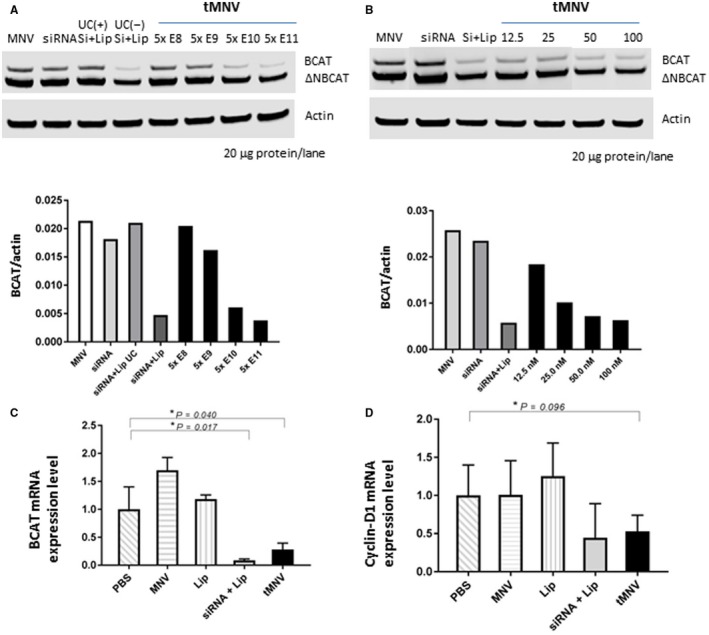Figure 2.

Therapeutic nanovesicles can deliver siRNA to β‐catenin into tumor cells in vitro. MNVs were isolated from fat‐free milk, and tMNVs were prepared by loading them with siRNA to β‐catenin using Lipofectamine. HepG2 cells were incubated with tMNVs. Cells were lysed and immunoblot performed after 48 hours for expression of wild‐type or ΔN90 β‐catenin and actin. (A,B) A representative blot (above) and average normalized expression (relative to actin; below) for wild‐type or ΔN90 β‐catenin from four separate studies are shown. (A) HepG2 cells were incubated with MNVs alone, β‐catenin‐siRNA at a final concentration of 50 nM, β‐catenin‐siRNA plus Lip alone (UC–) or followed by ultracentrifugation (UC+), or with the indicated number of tMNV particles. (B) HepG2 cells were incubated with MNVs alone (5 × 1011 particles), β‐catenin‐siRNA 100 nM alone or with Lip, or tMNVs loaded with the indicated concentration of β‐catenin‐siRNA. (C,D) HepG2 cells were incubated with PBS, MNVs, Lip, or β‐catenin‐siRNA plus Lip alone or with 0.50 μg/μL tMNVs. After 48 hours, cells were harvested, RNA isolated, and qRT‐PCR performed for (C) β‐catenin mRNA or (D) cyclin D1 mRNA expression. Data represent the mean ± SEM of 2‐ΔΔCt normalized expression from four separate studies for each. *P = <0.05. Abbreviations: Lip, Lipofectamine; ΔNBCAT, ΔN90 β‐catenin; UC+, ultracentrifugation; UC–, without ultracentrifugation.
